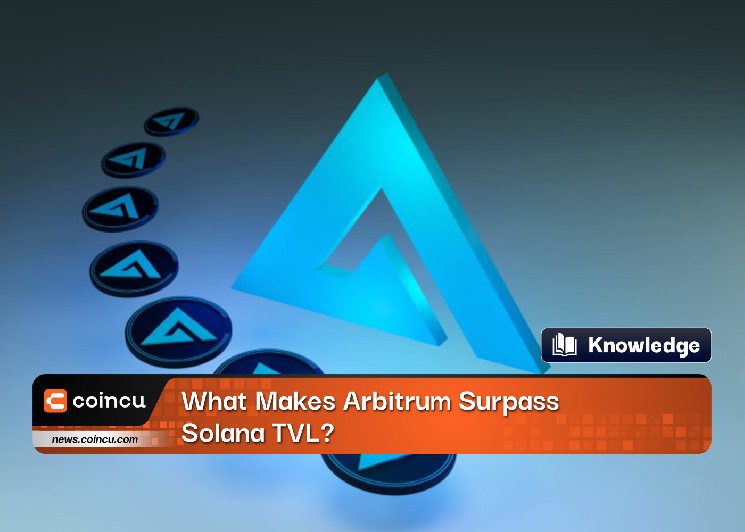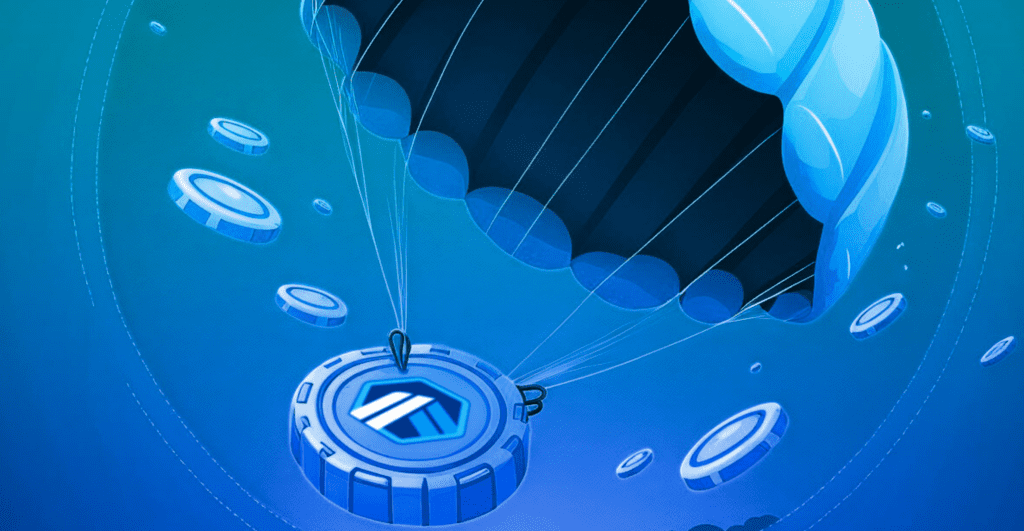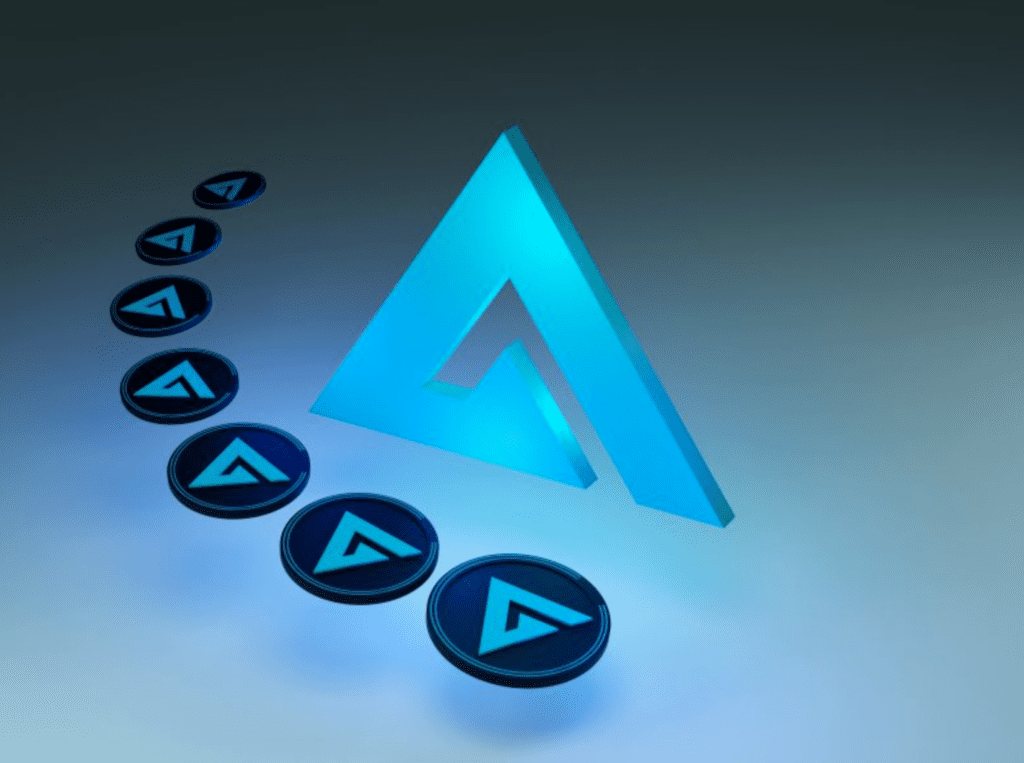What Makes Arbitrum Surpass Solana TVL?

What exactly is the Arbitrum?
The layer-2 capability known as the Arbitrum network was built by the New York-based company Offchain Labs with the intention of reducing the amount of congestion experienced by the Ethereum network by improving the approval process for smart contracts.
The platform makes advantage of the security provided by Ethereum’s mainnet, but it also enables smart contracts to be executed on a separate layer in order to reduce the amount of traffic on the network.
This procedure is referred to as “transaction rollups,” and it consists of batches of transactions and records that are confirmed on the lower layer before being transmitted to the mainnet of the layer-1 protocol, which in this case is the Ethereum mainnet.
Nodes who actively validate smart contracts that are supported by the Arbitrum chain and are responsible for adding blocks to the top tier of the Ethereum mainnet are rewarded with ETH by the Arbitrum protocol. These nodes are known as aggregators. Arbitrum One is a layer-2 mainnet that facilitates the execution of smart contracts, which are then validated by the Ethereum network (layer-1).
The development team forecasts a reduction in the amount of money paid for each transaction on layer 1 by a factor of fifty, which is the currency that will be used to pay arbitrum fees. This indicates that the cost of running smart contracts on the Arbitrum network should be lower than the cost of running them directly on the Ethereum mainnet.
Offchain Labs, which has its headquarters in New York City, is currently hard at work building not only the Arbitrum product but also an entire suite of scaling solutions. Ed Felten, Steven Goldfeder, and Harry Kalodner, who were all involved in founding Offchain Labs, are serving as the project’s leaders. Ed is a professor at Princeton University, Steven holds a Ph.D., and Harry is still working toward earning his Ph.D. These three individuals are all experts in blockchain technology and have a deep-seated interest in advancing the possibilities of cryptocurrencies.
Features of Arbitrum that you may be familiar with

Channels and AnyTrust side chains are going to be added to future editions of the Arbitrum platform as additional modes.
Individual nodes, similar to those found in other blockchains, have the option of taking part in the Arbitrum chain. Validator nodes are responsible for monitoring the current status of the chain, whereas full nodes are responsible for helping to aggregate layer 1 transactions. The remaining portion of the user’s transaction fees are dispersed to other participants on the network, such as validators, and aggregators who transfer transactions to the layer 1 chain are rewarded with ETH for their services. Validators are another type of participant on the network.
The rollup blocks of the Arbitrum blockchain will now include a challenge step, which enables other validators to evaluate the integrity of a block and issue a challenge if they perceive the block to be untrue. Validators who lie about their work will have their stakes taken away if a challenge or a block turns out to be invalid. This ensures that validators always play fairly or face the repercussions of their actions. fruit.
In addition to this, the platform comes equipped with its own own bespoke virtual machine known as the Arbitrum virtual machine (AVM). This is the environment in which Arbitrum smart contracts are executed, and it is built on top of EthBridge, which is a collection of smart contracts that interface with the Arbitrum chain. Any smart contracts that are compatible with Ethereum can be automatically translated to execute on the AVM.
Performs the duties of a separate network layer
Arbitrum operates as its own separate network layer, freeing the Ethereum mainnet from the burden of processing transactions that aren’t essential. This is accomplished by enabling smart contract validation through the utilization of optimistic Arbitrum rollups. The Ethereum Virtual Machine (EVM) compatibility of the Arbitrum network is currently what sets it apart from other protocols. This means that developers do not have to learn a new programming language in order to design decentralized applications (dApps) for use on the Arbitrum mainnet. Other protocols hope to make comparable breakthroughs in the future.
As a layer 2 scaling solution for Ethereum, Arbitrum is designed to not only enhance the transactional throughput of the network but also to lower the fees associated with individual transactions. Fees have been reduced by Arbitrum One as a result of the certification of smart contracts in batches, which also results in validators receiving compensation for their time.
The compatibility of the EVM is exceptional
Arbitrum is commonly considered to be one of the rollups that is most compatible with EVM. It is bytecode compatible with the EVM, and it works out of the box with any language that can compile to the EVM. Some examples of such languages include Solidity and Vyper. Because of this, it is not necessary for developers to learn a new language in order to build on Arbitrum, which makes creating it an easy process.
Highly effective tools for software developers
When it comes to expanding on their layer 2 solution, the team at Arbitrum is doing all in their power to lower the barriers to entry as much as they can. As a consequence of this, they have produced a comprehensive developer guide for Arbitrum, and developers can begin by using the tools that is already available for Ethereum. There is no requirement to acquire software that is specific to the Arbitrum platform, such as plugins or compilers like Hardhat or Truffle.
Fairly recently introduced
Since October, Arbitrum has been operating a number of different testnets, and it is now available on the mainnet for developers to use. Arbitrum, in contrast to many other layer 2 scaling solutions, does not have its own native utility coin. As a result, there was not a token sale for Arbitrum. In addition, all interested developers will have time to get up and running before Arbitrum opens to the general public. Recently, Arbitrum pledged to give at least two full weeks of development time to all 250+ development teams that applied to build on the developer mainnet before opening Arbitrum One to everyone.
Strongly developed ecological community
Arbitrum is already working in tandem with dozens of Ethereum-based decentralized applications (DApps) and infrastructure initiatives, such as Uniswap, DODO, and Sushi, amongst many more.
Will Investing in Arbitrum Prove to Be a Profitable Decision?

At this time, Arbitrum does not have a token. Due to the fact that Arbitrum charges transaction fees in ETH, existing investors might wish to think about making new investments in ETH. You are able to make an investment in a particular project by participating in its ecosystem. This ecosystem consists of a number of remarkable decentralized applications (dApps), such as Curve, Uniswap, and SushiSwap.
In addition, considering how fierce the competition is in the Layer 2 market right now, it is anticipated that Arbitrum will make even more progress in the years to come. Arbitrum currently has a number of companies to contend with as rivals, such as Boba Network and Optimism, amongst others.
The terrain of Layer 2 is still in the process of changing, but progress is being made. Even while it is impossible to predict whether or if Arbitrum would ever provide early adopters with a retroactive airdrop, it is in your best interest to make advantage of these technologies on a regular basis just in case.
Arbitrum is now being utilized in a number of different DeFi projects. After being introduced, the TVL (Total value locked) of Arbitrum quickly increased and eventually reached more over $2.5 billion at one time. The current highest TVL on Layer 2 belongs to the Arbitrum layer.
Conclusion
Arbitrum is an intriguing idea that has the potential to become a reality in the not-too-distant future. At the same time, the project has begun its preliminary stages, which include engaging with a large number of key industry partners including Uniswap, The graph, and Chainlink, amongst others, in order to include these projects into Arbitrum’s layer 2 architecture. This article should have provided you with sufficient information on the project for you to make your own decisions about investing on your own.
DISCLAIMER: The Information on this website is provided as general market commentary and does not constitute investment advice. We encourage you to do your own research before investing.







 Bitcoin
Bitcoin  Ethereum
Ethereum  Tether
Tether  USDC
USDC  Dogecoin
Dogecoin  Cardano
Cardano  TRON
TRON  Bitcoin Cash
Bitcoin Cash  Chainlink
Chainlink  Polygon
Polygon  Litecoin
Litecoin  Dai
Dai  LEO Token
LEO Token  Ethereum Classic
Ethereum Classic  Hedera
Hedera  Cronos
Cronos  Cosmos Hub
Cosmos Hub  Stacks
Stacks  Stellar
Stellar  OKB
OKB  Maker
Maker  Monero
Monero  Theta Network
Theta Network  Algorand
Algorand  NEO
NEO  Gate
Gate  KuCoin
KuCoin  Tezos
Tezos  EOS
EOS  Synthetix Network
Synthetix Network  IOTA
IOTA  Bitcoin Gold
Bitcoin Gold  Tether Gold
Tether Gold  TrueUSD
TrueUSD  Zilliqa
Zilliqa  Enjin Coin
Enjin Coin  Holo
Holo  Ravencoin
Ravencoin  0x Protocol
0x Protocol  Siacoin
Siacoin  Qtum
Qtum  Basic Attention
Basic Attention  Zcash
Zcash  NEM
NEM  Decred
Decred  Dash
Dash  Ontology
Ontology  Lisk
Lisk  Waves
Waves  DigiByte
DigiByte  Nano
Nano  Numeraire
Numeraire  Status
Status  Pax Dollar
Pax Dollar  Hive
Hive  Steem
Steem  Huobi
Huobi  OMG Network
OMG Network  BUSD
BUSD  Ren
Ren  Bitcoin Diamond
Bitcoin Diamond  Bytom
Bytom  Kyber Network Crystal Legacy
Kyber Network Crystal Legacy  HUSD
HUSD  Energi
Energi  Augur
Augur